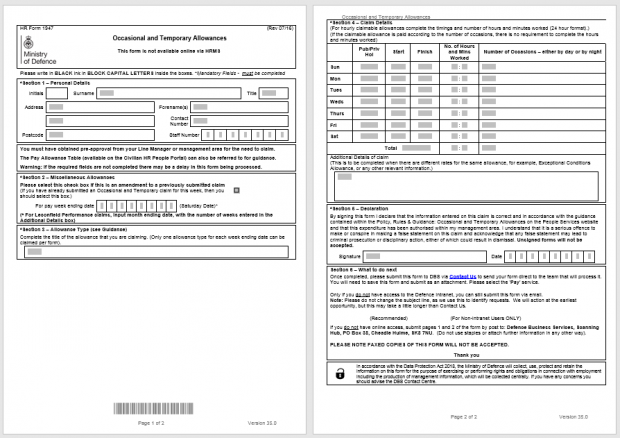How Defence Digital’s Application Service and Development & Operations (DevOps) Team (ASDT) and Defence Business Services (DBS) are making administration tasks easier by addressing an age-old problem.
Sometimes it’s hard to see the problem with how you’re doing things. Sometimes it’s easy to see the problem, but hard to do anything about it. Luckily, sometimes all it takes is a change of perspective.
I spent around a decade, split over two tours, at the Defence Business Service (DBS), which delivers Corporate Services such as Human Resources (HR), Finance, Security Vetting, and Veteran services. As you’ll be aware, these are the kind of services that have historically been heavily reliant on paperwork and manual processing. You know the routine: as an employee you raise a HR request, and spend time filling in several pages of personal details. You then print the form, sign the form, and post the form to DBS. On receipt of the form, DBS convert the paper form back into an electronic version, which entails several processes before it is ready for processing, and that’s if all the information is correct. I can’t be the only person who’s absent-mindedly used a previous version of a form and neglected to change the date, or forget that my base of operations has moved since I last used it? Can I?
If your information isn’t right, a helpdesk calls you to correct the data. This is a frustrating experience for the user and DBS staff. Okay, it may only take a few minutes, but multiply those minutes by the number of forms being dealt with, the number of people returning them, and so on. It soon adds up, and in today’s increasingly digitally connected world this all seems like wasted time and effort.
What’s more, does anyone else find it irritating to receive a form with your full name, address, post code, etc. on the envelope, but the first thing you are asked on the form is your name, address, post code? The same applies if it’s emailed to you. Why ask me to fill in my email? You have it, you had to have it to send me the form in the first place!

The solution seems easy enough: Cut out the possibility of this happening. How can we do that? In collaboration with my good friend Jay Symes in the DBS Automation Garage, a new service using robotic process automation (RPA) to automate repetitive work, and ASDT’s DASH, we are working on developing new online digital services using Microsoft’s Power Platform (PowerApps) to make the services easier to use. This is in full collaboration with the user community and DBS Civilian Personnel team.
We are also working to make the DBS back-office more efficient. Another critical element to enabling this digitisation is that PowerApps has built-in MODNET authentication. This allows MODNET (Defence Corporate ICT system incorporating Microsoft 0365 and collaboration tools) users to ‘single sign on’ without the need to enter username and passwords. The result is that wherever they are and whatever device they are using, we know who it is.
Finally, we needed a pattern to follow, so we created a forms template that is aligned with the Government Digital Service standards. Fortunately, most forms within DBS follow a standard four section format:
- Who are you?
- What do you want?
- Declaration
- Instructions
If users use MODNET to access the form, the single sign-on means we know who they are. We have all the relevant data such as you name and telephone numbers – already stored, so we can save users lots of time by filling many of these in automatically. In doing so, we save users time on typing while reducing the possibility of errors creeping in.
The declaration could be reduced from printing, signing, and posting the form, to a simple 'By ticking this box you are agreeing to' kind of clause, and instructions can be reduced to explanatory boxes next to the fields still needing to be filled in. Even many of the unique 'what do you want?' fields can be simplified by using drop down menus or tick box options, dramatically reducing the time a person needs to spend typing.
When the form is completed, pressing send will deliver it directly to where it’s needed, so there’ll be no more ‘lost in the post’, ‘not arrived on my desk’ or other such issues. What’s more, the information sent will remain exactly as it was sent. The possibility of human error in transcribing from one form to another, or onto a computer, is bypassed entirely.
Well, we’ve worked out how it can be done, so what now? I’m back working alongside DBS, this time on the other side of the fence in my new role, helping them put all this into practice. It’s work in progress, but we’re confident in its application and how it will benefit all involved. What’s more, we know that similar processes exist across Defence, so what we build will, with some minor tweaks, work just as well for others.

Even if your process isn’t as easy or intuitive as the one we’re working on with DBS, if we can spot a pattern to how things are done, it’s likely we can automate at least elements of it. There are some potentially easy wins that will save time and money, improve accuracy and accountability, increase your overall productivity, and even increase your green credentials. Common sense dictates that these are things we need to look at with an open mind and a critical eye.
Leave a comment